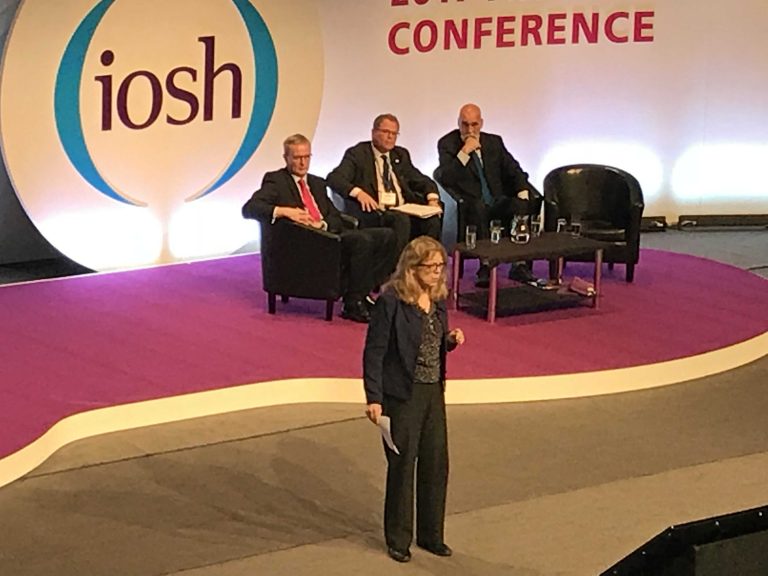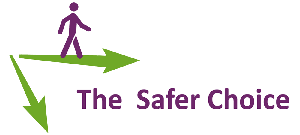Consultancy

Do you want policies that are more readable? Procedures that are more usable? Training that is more relevant? I can help you make sensible decisions about “the safer choices” for managing risk within the needs ot your organisation. Previous clients appreciate my ability to identify inconsistencies in current systems, and to write clearer (shorter!) processes.
If you’re looking for a full-time health and safety manager, I’m not the person for you. If you have a project which needs someone from the outside to review and revise how you do things, I might be able to help.
See below for examples of what I’ve delivered for other clients. Please see the separate page on Training for examples of courses I can deliver, and modes of delivery. Please get in touch if you’d like to know more.
Worked out why people made mistakes, and trained them to not to
A safety critical warehousing operation had been picked up by their regulator for a series of errors. I spent time with the staff to understand why these errors were being made. The procedures they were following were difficult to understand, and people were unclear what went on elsewhere on the site. I re-wrote some of the procedures, and developed and presented workshops to engage different groups of staff and managers, and to promote understanding of the “critical control points” in their operations.
Outcome: there was a noticeable change in the attitudes towards safety, and a measurable reduction in the number of “mis-picks” in the warehouse.

Tackled manual handling from job design
Having previously provided manual handling training for new staff, I persuaded the client that an advanced session for supervisors would be of benefit. After some classroom theory, we visited work areas and identified environments that increased the risk from manual handling, and where it would be difficult for staff to apply the standard training.
Outcome: Feedback from the workshop resulted in procedural changes to allow more time and people for some handling tasks, and in a long-term plan to replace high shelving with rotating racks to eliminate the need for handling at height.

Risk assessment workshop
The best way to learn how to assess risk is to assess risk. You can read books on risk assessment – like the one I’m writing – but nothing matches the experience of doing a risk assessment with a group of people to learn the ups and downs.
I worked with a facilities team to teach them how to improve their out-of-date and sketchy risk assessment. I reviewed their existing risk assessments, and chose one as the subject of a workshop. ‘Changing a fuse’. First, we discussed the task. My question was simple: what sort of fuse are you changing? “I guess it’s the 3‑amp fuse in a plug,” said one person. “No, I think it means changing the circuit breaker in the distribution board” suggested another. A third person look confused “I don’t think it would be either of those. I think it’s the fuses in the transformers”. The existing risk assessment was vague enough to apply to any of these, and general enough to be of use to none.
Once we agreed which fuse-changing task we were going to assess, we wrote a clearer task description for the assessment – one that would help others to know when the assessment was relevant to their task. We broke the task down into steps, and considered what could go wrong at each point. We documented the controls they had in place, and what monitoring was needed. We considered the adequacy of the controls, and where additional measures were needed. We agreed how these could be followed up. At the end of the workshop we had a team of six people, trained to do a risk assessment. And we had an example risk assessment, specific to their setting, that they could use as a model for future risk assessments.
For another client I designed an experimental protocol to assess the consistency of their approach to risk assessment in a measurable way. The results showed that staff didn’t have a consistent understanding of the scales used in their risk assessment processes.
Outcome: I created a simplified risk assessment process for the client that could be applied more consistently.
Facilities management support
I spent several years embedded as a health and safety advisor within a facilities team, dealing with warehouses, offices and laboratories. As well as providing support on policies and procedures, I provide training to new FM managers and supervisors. RoSPA recognised my expertise in this area by asking me to write a series of articles on FM.
- Facilities management: Covering the basics
Supported a manufacturer to do more, with less
I provide regular support a small manufacturing company through quarterly visits. On my first visit, I explained how they could cut their budget for some areas of safety training, while improving the quality and timeliness of the learning experience. They put my ideas into action, developing people internally to provide site-specific training, and saving the money previously spent on using external trainers to provide generic training.
Outcome: essential safety training can be provided on a new worker’s first day, and refresher training can be provided more often. The in-house trainers are recognised by other staff as people they can raise any concerns with. Their own competence has increased. The training is more specific to the workplace.
Changed how a client did e-learning
From 1996 to 2018 I wrote a software review column for a widely read health and safety magazine. In a review in 2004 I describe one vendor’s software as being marred by ‘too much text, with repeated information and unnecessary colloquialisms.” In a later review of a different product from the same provider I complained that while it had many good features, it lacked interaction and practical examples. Rather than get upset by my criticism, the vendor took the mature approach, challenging me: if you’re so good at criticising, come and write a better course for us. I worked regularly with this vendor from 2013 until they were bought out in 2020, reviewing existing courses, mentoring other course designers, and designing courses. I work as a subject matter expert (SME), as a learning advisor, and as a user interaction (UX) specialist. I’ve worked with the organisation to develop a style guide and a review process for the courses they produce.
Outcome: The client’s business grew, gaining clients from competitors. The designers I worked with have taken the ideas and standards we developed into other organisations. Story-telling, active learning and minimal text without repetition or colloquialisms.

Reduced bureaucracy
I reviewed the pages and pages of contractor documentation that an organisation had, determined what information was actually needed to manage risk and how much effort contractors would put into this process. I cut the whole process down to a three-page pre-arrival document, plus a short form to be completed on arrival. I trained staff on how to use the new procedures, and then tweaked the forms when they came back to me with suggestions once they started to use them.
Outcome: The contractor management process is quicker and more effective at controlling hazards.

A personal DSE homeworker study
The DSE projects I’ve worked on all have confidentiality clauses in them, which mean I can’t illustrate them with images here. However, here’s a very personal DSE project I was involved with. This is the ‘before’ image.
Outcome: a very happy homeworker

Replaced outdated paper system with efficient software
I reviewed the pages and pages of contractor documentation that an organisation had, determined what information was actually needed to manage risk and how much effort contractors would put into this process. I cut the whole process down to a three-page pre-arrival document, plus a short form to be completed on arrival. I trained staff on how to use the new procedures, and then tweaked the forms when they came back to me with suggestions once they started to use them.
Outcome: The contractor management process is quicker and more effective at controlling hazards.

Helped senior managers to understand their personal accountability
I had previously helped this client to simplify some of its safety documentation, and in the process of doing so discovered that some procedures had been written and re-written by two previous rounds of consultants but had never been implemented. I created and ran a workshop for senior managers and company owners. I used ISO 45001 as a framework, as this is a standard they aspire to achieve.
Outcome: the workshop produced the context statements needed for ISO45001, a greater understanding by the senior managers and owners of their personal accountability for health and safety, and an outline of how responsibilities could be delegated and monitored in the organisation.
Taught supervisors to deliver training
An important part of risk management is making sure people know what to do – there are plenty of examples of prosecutions of organisations that thought it was obvious to put the hand brake on, not to work at height on your own, or not to climb on fragile roofs. Where organisations can’t demonstrate that they provide regular training and instruction, they are often convicted. But you don’t need a Chartered Health and Safety Professional to come in once and year and remind people of straight forward controls. So, given a list of topics that a facilities team needed regular training on, I worked with the staff for several weeks, taking photographs of the work they do, the tools they use and the places they work. I compiled these into short picture-based training sessions. I wrote a script for the supervisor, based on asking questions to the other staff rather than telling them what to do, and then trained them to deliver the talks to their teams. The content is delivered using a paper-based easel, so people can be instructed anywhere, any time.
Outcome: Supervisors have become more confident in delivering short training sessions to remind staff of basic safety controls – and the organisation can demonstrate they have met their duty to instruct, inform and train.

Research for the HSE (1990s)
Flow of safety-related structural integrity information in the offshore industry (OTO 97 044/045). I applied human factors techniques to better understand how organisations collected, stored (or didn’t) and used information on structural integrity. There are two volumes on the HSE website:
Hazard management in structural integrity (OTO 98 148-152). Building on the earlier project, I interviewed five representatives from the offshore industry to understand better how they managed major hazards. I identified over two hundred separate hazard management measures, and just less than fifty constructs which people applied to select hazard controls. The report is in five volumes:
2 Summary report (start here!)
4 Inherent safety (interesting even if you aren’t involved offshore or with structural integrity)
Presentations
I have been comfortable standing in front of an audience since I was 11, as my wonderful English teacher encouraged us by holding in-school debates and putting us up for between-school speaking competitions. I’m equally happy providing an interactive training or coaching workshop, delivering a session for an IOSH or other professional meeting (in person, or virtual), participating in a webinar or podcast, or giving a formal presentation to a large audience.
Take a look at some presentation topics that are “oven-ready”, or let me know if there’s something bespoke you’re interested in.
You might find it useful to listen to some of my Webinars.

